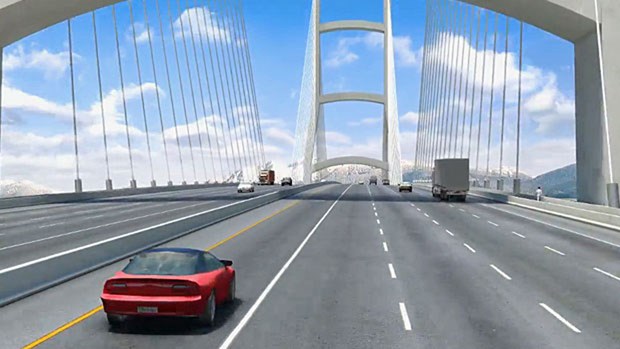As a result of public input the provincial government is building an eight-lane bridge to replace the Massey Tunnel. The value of this bridge is marginalized by manipulation of this public input. The real reason for the choice appears to be Port Metro’s need to get bigger ships up the Fraser River.
A number of options were presented to the public. One of which was the retention of the tunnel. As presented, this option had no additional means of obtaining the desired results to “support objectives for regional people movement,” to “relieve congestion” or to “improve safety.” As a result, this option was not supported. This is not a surprise as this is exactly what the process was meant to do; pave the way to remove the tunnel.
This tunnel is known to be safe and functional for many more years. So why dismantle it? Why not build the additional tunnel or bridge necessary for public transport? The cost to achieve the desired goal to relieve congestion this way will be substantially less.
Another option to have the bridge “placed in a different location” was equally designed to fail. The new location rerouted traffic back to Highway 99 and the Oak Street corridor. This served neither objective to “relieve congestion” or to apply “a visionary long term solution.”
The report allows that “most of the traffic through the tunnel goes to Richmond”. It does not factor in growth from border traffic or urban sprawl. Building the bridge will put more traffic on the road by encouraging development south of the Fraser. This puts more pressure on our farmlands. With less farmland we’ll need more produce shipped in, putting more trucks on the road. The additional ships coming through will create more truck traffic, adding to the problem.
Thus, the bridge will create a need for an additional traffic corridor to deal with this future growth. A “visionary long term solution” does not put more cars on the road or add traffic to the Oak Street corridor. To be “visionary,” the bridge should be smaller, augment the tunnel, and handle public transportation.
Building the bridge where the tunnel is will turn this major traffic corridor into a nightmare for a period of three to five years. This will affect Delta residents, South Surrey residents, border traffic, tourism, ferry traffic and truck and commercial traffic. Why is this not a major consideration?
The more contentious issue to B.C. is the federal Port Metro, and its need to remove the tunnel to allow larger ships up the Fraser. If the desire to remove the tunnel and build a bridge is for the benefit of Port Metro, then why are B.C. taxpayers paying the cost? Port Metro’s requirement is not an issue of transportation infrastructure. At the public consultation sessions no mention was made of the issue to “support trade and commerce,” these consultations were strictly focused on traffic infrastructure. Why then does the final report rate “transportation alternatives” lower than “economic growth?”
Lastly, a Freedom of Information request for the business case analysis turned up a 14-page response that is almost entirely whited out due to “disclosures harmful to the financial interests of public bodies.” Could it be that with a $3 billion cost, the money could be spent much effectively to serve the objectives? It is doubtful that any additional money will be available to deal with the real issues of relieving congestion or people movement. That will be a separate tax on top of the cost for this project. All of B.C. will pay if this Federal project is allowed to go ahead. And we will be no better off.
Peter van der Velden is a facilities management consultant in Tsawwassen.



